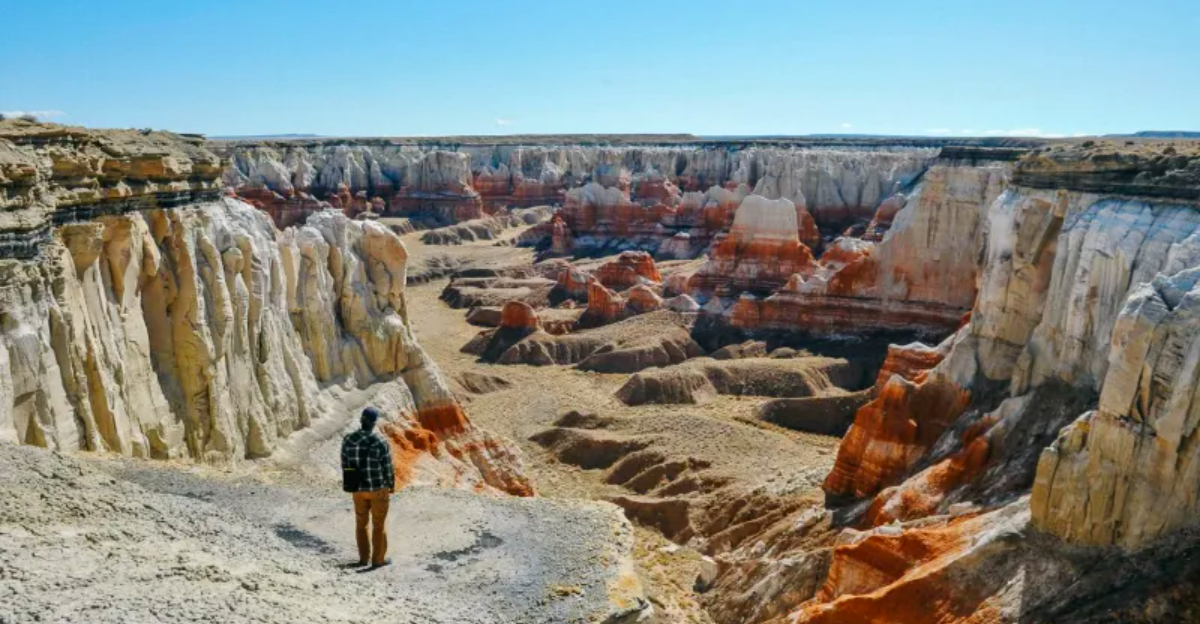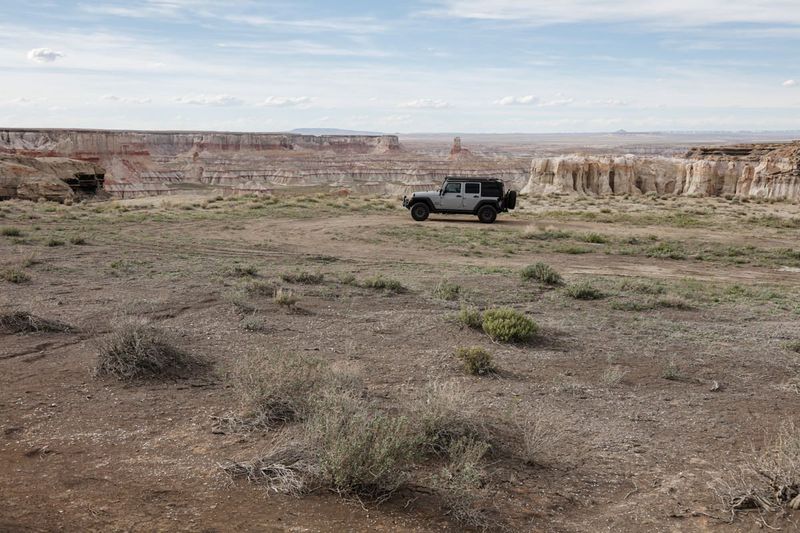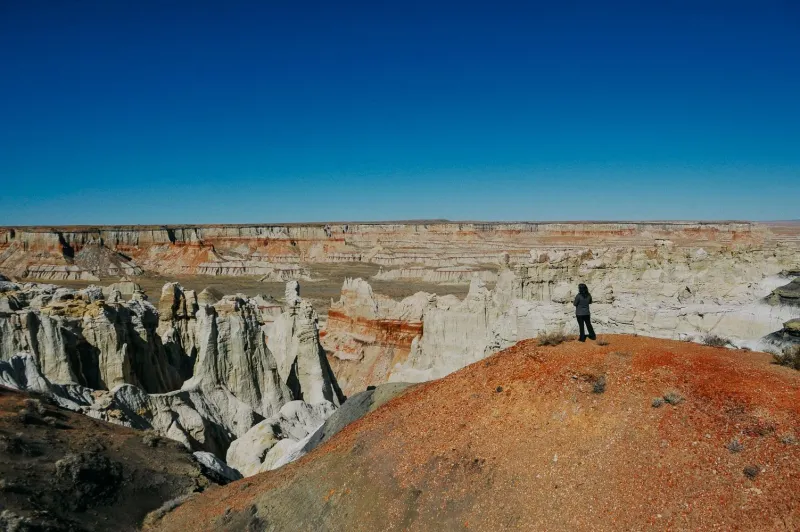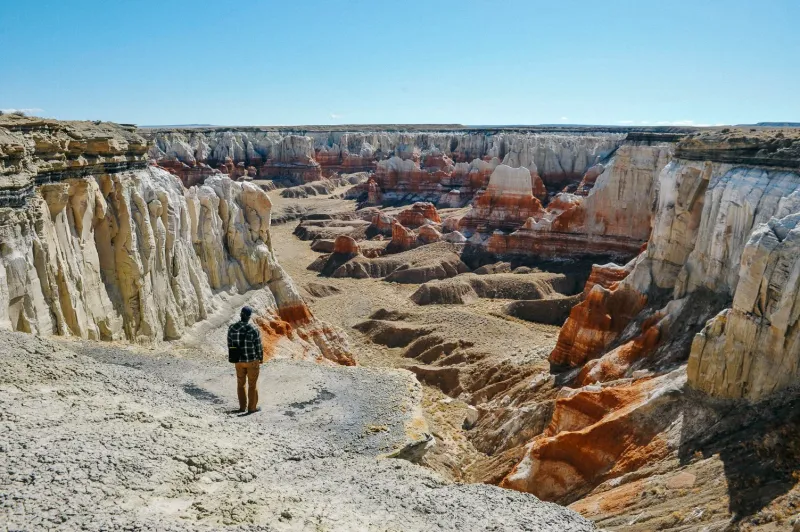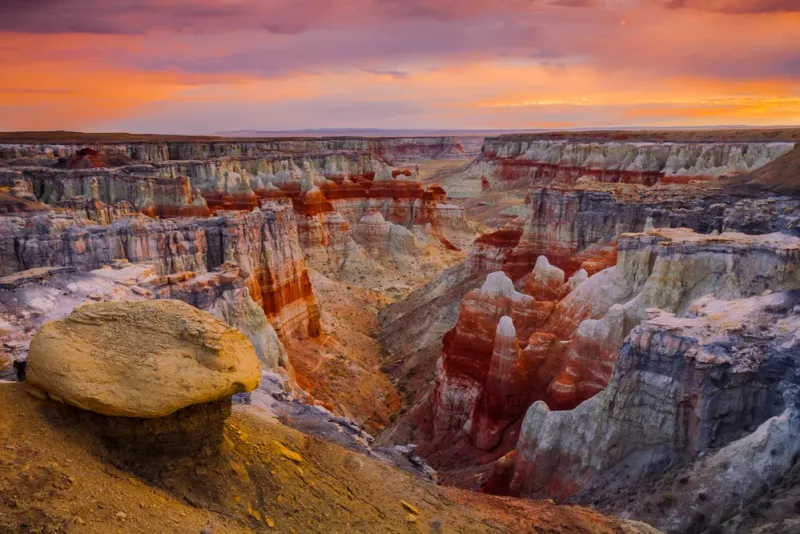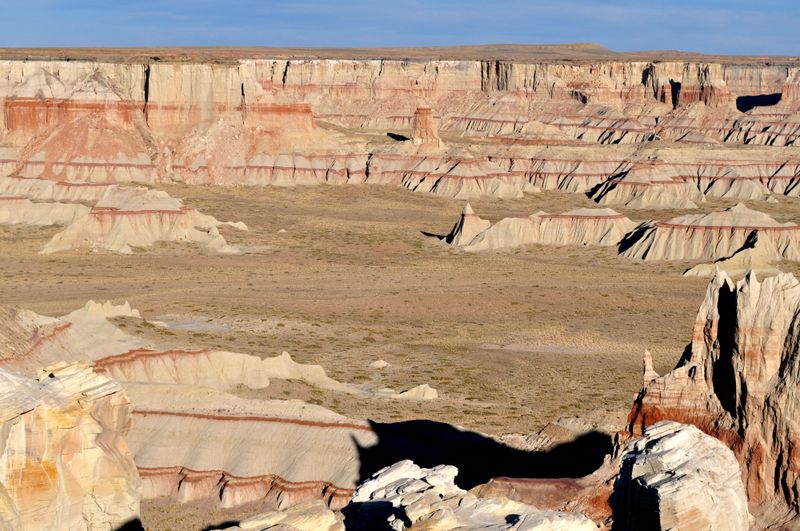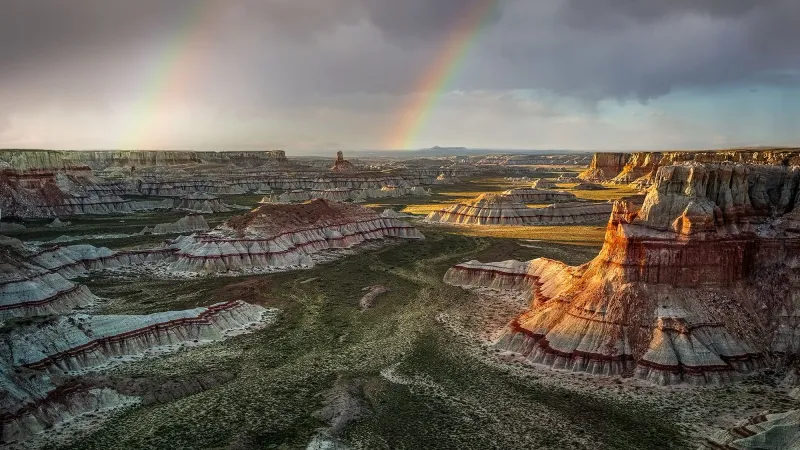Hidden between the Navajo and Hopi lands, Coal Mine Canyon explodes with unexpected color and silence. It’s the kind of place locals whisper about: remote, raw, and heartbreakingly beautiful. If you crave big views without big crowds, this canyon’s rim delivers moments of awe all to yourself. Read on for twelve essential tips to unlock its geologic magic, cultural respect, and safe, unforgettable exploration.
1. Striking Geologic Colors & Formations
Coal Mine Canyon is a painter’s palette poured across stone. Multicolored bands – vivid reds, stark whites, glowing oranges, and streaks of black – tell a layered story of sediment, heat, and time. Soft Dakota sandstone caps Entrada sandstone, while shale reveals rusty tones from partially burned coal seams. Erosion carves hoodoos, fins, and gullies that glow differently with each hour of light. Arrive near sunrise or sunset for luminous, dimensional shadows. Bring a telephoto lens to isolate patterns and a wide-angle to capture sweeping amphitheaters. Stay on existing paths: the rock is soft, the soils fragile, and the colors deserve careful footsteps.
2. Coal Legacy Gives It Its Name
The canyon’s name isn’t about riches; it’s about remnants. Thin, low-grade coal seams lace sections near the rim, leaving dark accents in otherwise bright sedimentary layers. Historically intriguing but economically poor, these seams never supported robust mining, and operations faded long ago. Today, you’ll spot the black stripes that tell of ancient plant matter compressed under time and heat. Resist the urge to collect: leave rocks and artifacts in place. Photograph textures instead. Understanding this coal legacy adds context to the canyon’s palette, where flames of geologic history flicker through banded stone without the scars of modern extraction.
3. Border of Navajo and Hopi Lands
Coal Mine Canyon straddles a cultural boundary as dramatic as its cliffs. The rim lies on the Navajo Nation, while parts of the canyon floor extend onto the Hopi Reservation. This overlapping geography means different authorities, rules, and traditions govern where you stand and where you might want to hike. Study maps before you go and respect posted signs. Boundaries matter – legally and spiritually. Acknowledge you’re visiting living homelands, not just a scenic backdrop. Learning a few greetings and protocols fosters goodwill. Your best souvenir is a respectful experience that leaves the landscape – and community relationships – stronger than you found them.
4. Permit Required to Visit
Don’t skip the paperwork. To legally access the rim areas, obtain a permit from Navajo Parks & Recreation, typically available in Cameron. Regulations can change, so call ahead for current fees, allowable activities, and photography guidelines. Keep your permit on you; rangers and chapter officials may check. The process supports stewardship and ensures visitors understand cultural and environmental expectations. Budget time to secure the permit, especially during weekends or holidays. Treat it as part of the journey – your contribution to protecting a fragile place and honoring the people who steward it. Preparedness pays off in peace of mind.
5. Hiking Into the Canyon Is Restricted
Descending from the rim is not a casual choice – it’s a regulated one. The canyon floor includes Hopi land, and reports indicate you must hire a certified Hopi guide to hike within. This protects sensitive sites, reduces erosion, and enhances safety in complex terrain. Don’t rely on vague online routes; conditions and permissions change. If you’re determined to go below, arrange your guide in advance and confirm boundaries. Otherwise, remain at designated overlooks and rim trails. The top-down views are spectacular, and you’ll avoid legal trouble, cultural missteps, and the hazards of unmarked, unstable descent routes.
6. Remote, Off-the-Beaten-Path Feel
Once you leave Highway 264, services evaporate. No visitor center, no paved roads, and often no cell signal – just wind, sky, and silence. This remoteness is the allure and the risk. Bring extra water, a full tank, paper maps, and a realistic timeline. Check weather; storms transform dirt tracks into traps. Tell someone your plan and turnaround time. The reward is space to breathe and listen – ravens on thermals, a hush that amplifies color. The cost is self-reliance. If that excites you, Coal Mine Canyon will feel like a secret shared, not a souvenir consumed.
7. Unimproved Trails & Rugged Terrain
Expect rough footing and sparse signage. Trails here are often informal, sometimes only cairns across badlands and slick, sandy slopes. Regulations emphasize staying on existing routes; creating new ones scars soils for generations. Sturdy boots, trekking poles, and GPS redundancy are smart. Summer heat dehydrates fast, while winter ice lurks in shade. Winds can be fierce along exposed rims. If you’re new to off-trail terrain recognition, stay conservative. The landscape is dramatic but unforgiving. Plan water refills and sun protection, and keep group members within sight. Ruggedness is the price of solitude – and it’s worth paying carefully.
8. Cultural Sensitivity & Traditional Land
This is not empty land; it’s a living cultural landscape. The Coalmine Canyon Chapter identifies herb-gathering places, ceremonial areas, and other sensitive sites nearby. Approach with humility: avoid loud music, drones where prohibited, and intrusive behavior. Do not touch or photograph sacred items or private ceremonies. Pack out everything, even micro-trash. When in doubt, ask or step back. Your conduct determines whether access remains open and relationships stay positive. Think of your visit as a privilege extended by communities whose traditions outlast our itineraries. Quiet appreciation goes further than any footprint ever should.
9. Spectacular Overlooks and Picnic Spots
For sweeping vistas without committing to tricky routes, target the main overlooks. A dirt road off Highway 264 – near mile markers 336–337 – leads to a modest picnic area perched above sculpted amphitheaters. The scene begs for a slow lunch and long lens work as light grazes banded walls. Check the track after rain, and park where the ground is firm. Respect wind: secure hats, wrappers, and tripods. Early and late hours light the canyon dramatically, while midday emphasizes graphic color bands. Even from a table, the geology performs, and you’ll leave with memory cards brimming and crumbs whisked by desert air.
10. Geologic History in Plain Sight
Every stratum here reads like a chapter in deep time. Mesozoic sediments – sandstones, shales, and siltstones – record rivers, dunes, and ancient shorelines. Cross-bedding, hoodoos, and knife-edged fins showcase the erosive power of wind and water sculpting soft layers. You can trace transitions from Entrada to Dakota sandstones and spot shale horizons tinted by oxidized organics. A field guide enhances the view, but simple observation works too: look for grain size shifts, color bands, and fracture patterns. The canyon’s forms are dynamic, changing with freeze-thaw cycles and storms. Geology class has no walls here – just a vast, open textbook.
11. Fragile & Erosion-Prone Environment
The beauty you admire is easily wounded. Delicate soils and crumbly clay slopes erode quickly under wandering feet and shortcut trails. Navajo Nation guidance is clear: stay on existing routes; don’t carve new lines. Recovery from a single misstep can take decades to centuries in arid climates. Avoid steep edges where undercut rims can collapse. Keep groups small to reduce impact, and skip hikes after heavy rain. Your restraint preserves the canyon’s story for others – and for future you. Let the wind write the shapes, not your footprints. Stewardship is the most meaningful souvenir you can leave behind.
12. A Quiet, Underrated Photography Spot
Photographers whisper about Coal Mine Canyon because it offers solitude with spectacle. There are no boardwalks or bus queues – just shifting light over layered cathedrals. Arrive before dawn to scout safe footing and compose silhouettes against the first glow. Use a polarizer sparingly to control glare without killing color; bracket exposures to hold bright whites and deep reds. Telephoto lenses compress patterns; wides capture amphitheaters. Off-season weekdays are best for quiet; winter air brings clarity. Respect cultural guidelines for drones and portrait work. When the sun ignites those bands, you’ll understand why this canyon feels like a secret.
